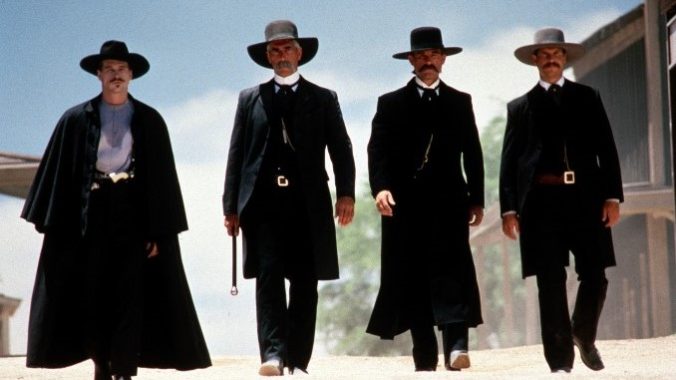30 Years On,Tombstone Looks Like the Only Normal Western of the ’90s

Tombstone may be the only true ’90s western. Of course, there were other westerns released in the 1990s; it’s actually the decade that saw the most westerns win Best Picture Oscars, accounting for 20% of the decade’s ten selections. But those two winners (also big hits) were by dedicated actor-director practitioners of the form: Kevin Costner, whose Dances with Wolves was the most prominent but by no means his only foray into the west (another one, in fact, drops next summer); and Clint Eastwood, whose Unforgiven served as an elegiac farewell to the genre (and also an unofficial one, if you count Cry Macho as a western of sorts). These were major movie-star projects, as was Mel Gibson’s TV adaptation Maverick. Other ’90s highlights of the genre, like Desperado and The Quick and the Dead, are specific gunfighter riffs with a tongue-in-cheek sensibility. City Slickers and Wild Wild West are overtly comic variations. (City Slickers, with its use of a cosplayed western narrative as a means of helping boomer males self-actualize, may actually be the most ’90s western.) But Tombstone stands alone as a traditional western, with movie stars but not superstars, that turned into a sizable (and surprising) hit back in the final week of 1993.
This wasn’t supposed to be the hit Wyatt Earp movie of the mid-90s. That was, naturally, supposed to belong to ol’ Kevin Costner, whose Lawrence Kasdan collaboration Wyatt Earp would flop the following summer, seemingly at least in part because Tombstone beat it to the punch. It doesn’t seem like timing should have mattered, though: As well-liked as Kurt Russell has been for so much of his career, in 1993 he was coming off Unlawful Entry and Captain Ron, while Costner was on a hot streak of Oscars and hits, interrupted only by one of his best-ever performances in Clint Eastwood’s A Perfect World. Accordingly, Russell’s retired version of Earp, who moves to the town of Tombstone with his brothers Virgil (Sam Elliott) and Morgan (Bill Paxton), doesn’t exude movie-star mythology the same way a new Costner western would.
That’s not just because Val Kilmer steals the movie as Earp’s sweaty but unflappable (and tuberculosis-ridden) pal Doc Holliday, or because Russell spends much of the movie flanked by the similarly charismatic Paxton and Elliott – though all of that certainly contributes to Russell’s comparable modesty. With the accumulation of 30 years, that becomes even more pronounced, as Tombstone’s formidable acting talent overflows even further to 2023 eyes. You’ve got Paxton’s fellow James Cameron alumni Michael Biehn and Stephen Lang; the legendary Charlton Heston in a minor role and fellow legend Robert Mitchum contributing some narration; character actors like Powers Boothe and Lost star Terry O’Quinn; Billy Zane, why not; and, in small parts a few years ahead of their breakthrough performances, Billy Bob Thornton and Thomas Haden Church. Though not everyone here was equally famous three decades ago, this extremely deep bench still allows Russell’s Earp to emerge from the narrative gradually, rather than immediately pop – despite being the most famous character in the movie, played by one of the most famous actors in its ensemble. Earp doesn’t especially want to serve as Tombstone’s new lawman – Virgil is more adamant about confronting a cowboy gang menacing the town – but eventually he becomes more or less the only man for the job.
-

-

-

-

-

-

-

-

-

-

-

-

-

-

-

-

-

-

-

-

-

-

-

-

-

-

-

-

-

-

-

-

-

-

-

-

-

-

-

-








































